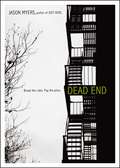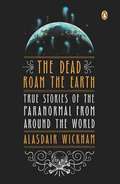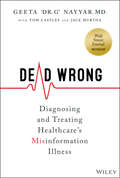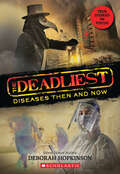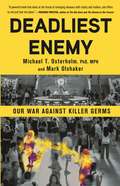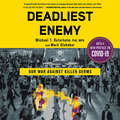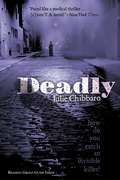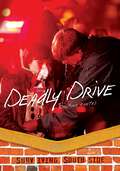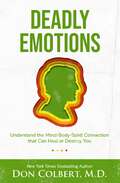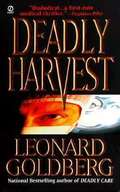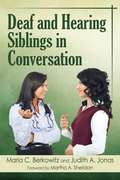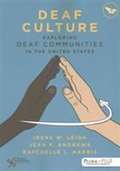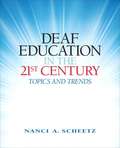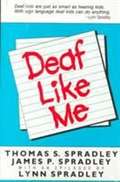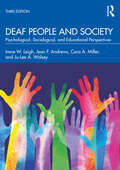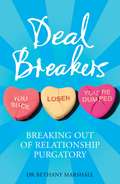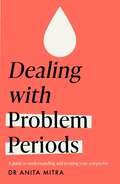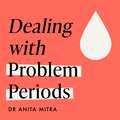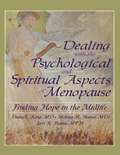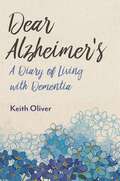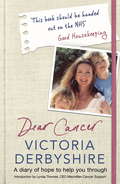- Table View
- List View
Dead End
by Jason MyersDru and Gina are young, in love, and can't wait to get out of Marshall, Nebraska, a town where bloodline means everything and whoever has the money makes the rules. But all their dreams are shattered when Gina has a monstrous run-in with the son of the richest man in Marshall--an incident that leaves her broken, battered, and violated. Driven by rage, Dru and Gina take matters into their own hands, and quickly find themselves in over their heads. Without any other options, Dru and Gina are on the run. But there's more chasing them than they think, and love might not be enough to save them.
The Dead Roam the Earth: True Stories of the Paranormal from Around the World
by Alasdair WickhamCaptivating true accounts of the paranormal from all over the world Do you believe in ghosts? From incubi in Sumatra to exorcism in Sudan to spirits in our own backyard, The Dead Roam the Earth explores the fascinating variety—and uncanny similarity—of supernatural encounters in every corner of the planet, providing chilling accounts of real-life ghost sightings, haunted places, poltergeists, possessions, Mothmen, demons, witchcraft, ritualistic killings, and much more. Could so many people in so many places just be imagining things? In addition to its wealth of testimonials from ordinary people witnessing extraordinary things, this engrossing book presents the latest scientific attempts to make sense of the supernatural—including how electronic equipment has revolutionized spiritual communication—and finds the devil in the details. .
Dead Wrong: Diagnosing and Treating Healthcare's Misinformation Illness
by Geeta NayyarSave lives and improve public health by countering misinformation In Dead Wrong: Diagnosing and Treating Healthcare’s Misinformation Illness, a team of health misinformation experts delivers a first-hand account of the dangers posed by false narratives and snake oil in the face of deadly healthcare crises, like the COVID-19 pandemic. In the book, you’ll explore the challenges facing those who fight to restore truth to a place of primacy in the United States healthcare system, the strategies they use, and the lessons you can draw from their real-world stories. Through interviews with healthcare leaders on the frontlines of the COVID-19 pandemic and an intuitive discussion of contemporary academic research, the authors highlight issues of critical importance in the quest to bring accurate information to the American public. You’ll also find: An exhortation to healthcare professionals to take up the cause of countering misinformation as if their lives and livelihoods depend on it A compelling portrait of the seriousness of the information predicament in which we currently find ourselves Actionable, practical strategies for countering misinformation in today’s information ecosystem Perfect for clinicians, public health leaders, health-tech leaders, and health marketers, Dead Wrong will also earn a place in the libraries of media professionals and community leaders with an interest in keeping the American public healthy and vibrant.
The Deadliest Diseases Then and Now (The Deadliest)
by Deborah HopkinsonPerfect for young readers of I Survived and the Who Was series! Packed with graphics, photos, and facts for curious minds, this is a gripping look at pandemics through the ages.The deadly outbreak of plague known as the Great Mortality, which struck Europe in the mid 1300s and raged for four centuries, wiped out more than 25 million people in the course of just two years. With its vicious onslaught, life changed for millions of people almost instantaneously.Deadly pandemics have always been a part of life, from the Great Mortality of the Middle Ages, to the Spanish Influenza outbreak of 1918, to the eruption of COVID-19 in our own century. Many of these diseases might have seemed like things to read about in history books -- until the unthinkable happened, and our own lives were turned upside down by the emergence of the novel coronavirus.As we learn more about COVID-19, we may be curious about pandemics of the past. Knowing how humans fought diseases long ago may help us face those of today. In this fast-paced, wide-ranging story filled with facts, pictures, and diagrams about diseases -- from plague to smallpox to polio to flu -- critically acclaimed Sibert Honor author Deborah Hopkinson brings voices from the past to life in this exploration of the deadliest diseases of then and now. Filled with more than 50 period photographs and illustrations, charts, facts, and pull-out boxes for eager nonfiction readers.
Deadliest Enemy: Our War Against Killer Germs
by Mark Olshaker Dr Michael OsterholmThe USA Today Bestseller 'The infectious disease expert who predicted the spread of coronavirus' - Daily Mail'Osterholm has produced a sharp, persuasive and urgent manifesto for how the world needs to think differently about natural threats, offering a blueprint for setting priorities and explaining why the infrastructure of global health needs reconfiguring... Deadliest Enemy will help to set the terms of that essential post-coronavirus conversation.' - Financial TimesUnlike natural disasters, whose destruction is concentrated in a limited area over a period of days, and illnesses, which have devastating effects but are limited to individuals and their families, infectious disease has the terrifying power to disrupt everyday life on a global scale, overwhelming public and private resources and bringing trade and transportation to a grinding halt.In today's world, it's easier than ever to move people, animals, and materials around the planet, but the same advances that make modern infrastructure so efficient have made epidemics and even pandemics nearly inevitable. And as outbreaks of COVID-19, Ebola, MERS, and Zika have demonstrated, we are woefully under-prepared to deal with the fallout. So what can - and must - we do in order to protect ourselves from mankind's deadliest enemy?Drawing on the latest medical science, case studies, policy research, and hard-earned epidemiological lessons, Deadliest Enemy explores the resources and programs we need to develop if we are to keep ourselves safe from infectious disease. The authors show how we could wake up to a reality in which many antibiotics no longer cure, bio-terror is a certainty, and the threat of a disastrous influenza or coronavirus pandemic looms ever larger. Only by understanding the challenges we face can we prevent the unthinkable from becoming the inevitable.Deadliest Enemy is high scientific drama, a chronicle of medical mystery and discovery, a reality check and a practical plan of action.
Deadliest Enemy: Our War Against Killer Germs
by Dr Michael Osterholm Mark OlshakerThe USA Today Bestseller 'The infectious disease expert who predicted the spread of coronavirus' - Daily Mail'Osterholm has produced a sharp, persuasive and urgent manifesto for how the world needs to think differently about natural threats, offering a blueprint for setting priorities and explaining why the infrastructure of global health needs reconfiguring... Deadliest Enemy will help to set the terms of that essential post-coronavirus conversation.' - Financial TimesUnlike natural disasters, whose destruction is concentrated in a limited area over a period of days, and illnesses, which have devastating effects but are limited to individuals and their families, infectious disease has the terrifying power to disrupt everyday life on a global scale, overwhelming public and private resources and bringing trade and transportation to a grinding halt.In today's world, it's easier than ever to move people, animals, and materials around the planet, but the same advances that make modern infrastructure so efficient have made epidemics and even pandemics nearly inevitable. And as outbreaks of COVID-19, Ebola, MERS, and Zika have demonstrated, we are woefully under-prepared to deal with the fallout. So what can - and must - we do in order to protect ourselves from mankind's deadliest enemy?Drawing on the latest medical science, case studies, policy research, and hard-earned epidemiological lessons, Deadliest Enemy explores the resources and programs we need to develop if we are to keep ourselves safe from infectious disease. The authors show how we could wake up to a reality in which many antibiotics no longer cure, bio-terror is a certainty, and the threat of a disastrous influenza or coronavirus pandemic looms ever larger. Only by understanding the challenges we face can we prevent the unthinkable from becoming the inevitable.Deadliest Enemy is high scientific drama, a chronicle of medical mystery and discovery, a reality check and a practical plan of action.
Deadly
by Julie Chibbaro Jean-Marc Superville SovakIn turn-of-the-century New York City, germ theory is a revolutionary idea, and unfortunately not one taught at sixteen-year-old Prudence Galewski's traditional school for girls. But with a stroke of luck, she lands a position in a laboratory, where she is swept into an investigation bound to change medical history. A mysterious spread of typhoid fever threatens the city, and a new hypothesis suggests that Mary Mallon --dubbed "Typhoid Mary" by the press -- is a "healthy carrier," someone who can transport the germ without being infected by it. But Mary, a fierce household cook who's never been sick, suspects that the accusation against her is simply an act of discrimination against immigrants. Prudence is determined to reveal the truth, and in a time when science is dominated by men, she has her work cut out for her. Told in journal format with black-and-white art throughout, Deadly is an early twentieth-century CSI that is as compelling as it is relevant.
Deadly Drive (Surviving Southside)
by Justine FontesWhen Rob and Gabi skip school with two friends, the group makes a terrible mistake. Rob and his friends end up in a deadly accident, and suddenly Rob's world has changed. The girl of his dreams is even blaming him for what happened. Will Rob be able to deal with the pain?
Deadly Emotions: Understand the Mind-Body-Spirit Connection that Can Heal or Destroy You
by Don ColbertNow with added content and updated statistics! Bestselling author Dr. Don Colbert explores how negative emotions can have a deadly effect on the body, mind, and spirit, and offers techniques for releasing these toxic catalysts.Destructive emotions can have toxic effects on the body and result in a wide range of serious illnesses – hypertension, arthritis, multiple sclerosis, irritable bowel syndrome, and even some types of cancer. The truth is you may be shaving years off your life expectancy and robbing yourself of the physical healthy you&’ve worked hard for.Readers will learn:that depression isn't "just in your head" how to prevent the downward unhealthy spiral of guilt and shame how the brain interprets emotions how to turn off stress the physical dangers of pent-up hostility and much more In Deadly Emotions, Dr. Don Colbert exposes those potentially devastating feelings – what they are, where they come from, and how they manifest themselves. You do not have to be at the mercy of your emotions. Focusing on four areas essential to emotional well-being – truth, forgiveness, joy, and peace – Dr. Colbert shows you how to rise above deadly emotions and find true healthy – for your body, mind, and spirit. This book is ideal for readers who are ready to take control of their health by breaking free from toxic emotions that can have a lasting negative impact on their health. A great resource for those who battle with chronic stress or stress-related conditions.
Deadly Harvest (Joanna Blalock #4)
by Leonard S. GoldbergForensic pathologist Joanna Blalock returns in this fourth installment of medical corruption and intrigue! When her sister is diagnosed with an Ebola-type virus which causes her liver to fail, Joanna turns to an organization reputed to be the best in finding replacement organs. But Joanna discovers the true nature of the company's sinister tactics in acquiring perfect transplants. With her sister's life hanging in the balance, she must make a life-or-death decision before she becomes the victim of a conspiracy which could shake the foundations of the medical world!
Deaf Again
by Mark DrolsbaughDrolsbaugh was born to deaf parents, yet had normal hearing that became a progressive hearing loss. Follow his trip through hearing, hard of hearing, and deaf identity. Many provocative ideas and facts are brought forward for discussion.
Deaf And Hearing Siblings In Conversation
by Marla C. Berkowitz Judith A. JonasThis is the first book to consider both deaf and hearing perspectives on the dynamics of adult sibling relationships. Deaf and hearing authors Berkowitz and Jonas conducted interviews with 22 adult siblings, using ASL and spoken English, to access their intimate thoughts. A major feature of the book is its analysis of how isolation impacts deaf-hearing sibling relationships. The book documents the 150 year history of societal attitudes embedded in sibling bonds and identifies how the siblings' lives were affected by the communication choices their parents made. The authors weave information throughout the text to reveal attitudes toward American Sign Language and the various roles deaf and hearing siblings take on as monitors, facilitators, signing-siblings and sibling-interpreters, all of which impact lifelong bonds. Included: questions for guided discussion, extensive bibliography, and other features.
Deaf Culture: Exploring Deaf Communities in the United States
by Raychelle L. Harris Irene W. Leigh Jean F. AndrewsHow does Deaf culture fit into education, psychology, cultural studies, technology and the arts? Deaf Culture: Exploring Deaf Communities in the United States addresses this through both theoretical and practical information. With the recognition of American Sign Language (ASL) as a bona fide language, the perception of Deaf people has evolved into the recognition of a vibrant Deaf culture centered around the use of signed languages and communities of Deaf people. This text also describes how rapid advances in technology, including the Internet as well as new visual and auditory technologies, have not only created opportunities for Deaf people to influence how technology can be used, but additionally has become a powerful force in influencing the behavior of Deaf individuals within diverse national and international societies. This has created opportunities for incorporating diversity and international perspectives into Deaf culture. Within each chapter are multiple vignettes, examples, pictures, and stories to enhance content interest for readers and facilitate instructor teaching. Theories are introduced and explained in a practical and reader-friendly manner to ensure understanding, and clear examples are provided to illustrate concepts. In addition, students of American Sign Language and Deaf Studies will find an introduction to possible opportunities for professional and informal involvement with ASL/Deaf culture children and adults. Deaf Culture fills a unique niche as an introductory text that is accessible and straightforward for those beginning their studies of the Deaf-World.
Deaf Education in the 21st Century: Topics and Trends
by Nanci A. ScheetzAs the author writes in his preface to the edition, Deaf education in the 21st century has and will continue to undergo a rapid transformation primarily due to the advent of technological advances, innovative educational opportunities, and shrinking cultural boundaries. This text provides professionals, preservice teachers, interpreters, counselors, and other related personnel with a broad and balanced perspective on current topics and trends germane to the field today. In the coverage of a wide array of topics that include educational perspectives, psychosocial precepts, communication modes, cochlear implants, advances in hearing-aid technology, and other timely and relevant topics, the reader is exposed to a panoramic view of a complex field rather than an in-depth analysis of each of the major dimensions. This text is a sourcebook on the many dimensions found within the field of deaf education. Designed as a teaching-learning vehicle, basic concepts recur in varying situations, and illustrations and some concepts are repeated in diverging contexts to promote comprehension and enhance retention.
Deaf Like Me
by Thomas S. Spradley James P. Spradley<P>Deaf Like Me is the moving account of parents coming to terms with their baby girl's profound deafness. The love, hope, and anxieties of all hearing parents of deaf children are expressed here with power and simplicity. <P>In the epilogue, Lynn Spradley as a teenager reflects upon being deaf, her education, her struggle to communicate, and the discovery that she was the focus of her father's and uncle's book. At once moving and inspiring, Deaf Like Me is must reading for every parent, relative, and friend of deaf children everywhere.
Deaf People and Society: Psychological, Sociological, and Educational Perspectives
by Irene W. Leigh Jean F. Andrews Cara A. Miller Ju-Lee A. WolseyDeaf People and Society is an authoritative text that emphasizes the complexities of being D/deaf, DeafBlind, Deaf-Disabled, or hard of hearing, drawing on perspectives from psychology, education, and sociology. This book also explores how the lives of these individuals are impacted by decisions made by professionals in clinics, schools, or other settings. This new edition offers insights on areas critical to Deaf Studies and Disability Studies, with particular emphasis on multiculturalism, equity, and inclusion. Accessibly written, the chapters include objectives and suggested further reading that provides valuable leads and context. Additionally, these chapters have been thoroughly revised and incorporate a range of relevant topics including etiologies of deafness; cognition and communication; bilingual, bimodal, and monolingual approaches to language learning; childhood psychological issues; psychological and sociological viewpoints of deaf adults; the criminal justice system and deaf people; psychodynamics of interaction between deaf and hearing people; and future trends. The book also includes case studies covering hearing children of deaf adults, a young deaf adult with mental illness, and more. Written by a seasoned D/deaf/hard of hearing and hearing bilingual team, this unique text continues to be the go-to resource for students and future professionals interested in working with D/deaf, DeafBlind, and hard-of-hearing persons. Its contents will resonate with anyone interested in serving and enhancing their knowledge of their lived experiences of D/deaf, DeafBlind, Deaf-Disabled, and hard-of-hearing people and communities.
Deaf People and Society: Psychological, Sociological, and Educational Perspectives
by Irene W. Leigh Jean F. Andrews Cara A. Miller Ju-Lee A. WolseyDeaf People and Society is an authoritative text that emphasizes the complexities of being D/deaf, DeafBlind, Deaf-Disabled, or hard of hearing, drawing on perspectives from psychology, education, and sociology. This book also explores how the lives of these individuals are impacted by decisions made by professionals in clinics, schools, or other settings. This new edition offers insights on areas critical to Deaf Studies and Disability Studies, with particular emphasis on multiculturalism and multilingualism, as well as diversity, equity, and inclusion. Accessibly written, the chapters include objectives and suggested further reading that provides valuable leads and context. Additionally, these chapters have been thoroughly revised and incorporate a range of relevant topics including etiologies of deafness; cognition and communication; bilingual, bimodal, and monolingual approaches to language learning; childhood psychological issues; psychological and sociological viewpoints of deaf adults; the criminal justice system and deaf people; psychodynamics of interaction between deaf and hearing people; and future trends. The book also includes case studies covering hearing children of deaf adults, a young deaf adult with mental illness, and more.Written by a seasoned D/deaf/hard of hearing and hearing bilingual team, this unique text continues to be the go-to resource for students and future professionals interested in working with D/deaf, DeafBlind, and hard-of-hearing persons. Its contents will resonate with anyone interested in serving and enhancing their knowledge of their lived experiences of D/deaf, DeafBlind, Deaf-Disabled, and hard-of-hearing people and communities.
Deal Breakers: When to Work on a Relationship and When to Walk Away
by Bethany MarshallThis is a book about men. Not all men, just emotionally unhealthy men. The ones who make you question, "Is it him or is it me? Am I making too big a deal out of this? I try to tell him how I feel, but he says I'm overreacting or needy or it's all my fault. "Relationships are hard work, but how hard should they be? When do you know you are strugglingtoo hardto make a relationship succeed?Deal Breakersis about getting out of this "relationship purgatory" -- where the present is unfulfilling and the future is the only thing you can hope for. But there is no magic future. If he won't work on problems today, it's unlikely they'll ever be resolved. And passively hoping for change will only cost you years of depression or expensive therapy. Dr. Bethany Marshall is here to remind women that relationships -- likebusinessrelationships -- are deals. In the business world, a deal breaker is the one nonnegotiable term that, if not agreed to, means the deal is off. But in the world of relationships, identifying your deal breaker can be much more promising, as it holds out the possibility of helping you to understand where the relationship has gone wrong, what needs to be done in order to make it better, and when to walk away because you're doing more work than him to fix it. A deal breaker is a boundary that smart people set for themselves because they know that falling in love can make them do stupid things. Through case studies, deal breaker scenarios, and suggested courses of action,Deal Breakersexpertly guides frustrated women. By defining your deal breaker, you hold all the power to create the happiness you deserve.
Dealing with Problem Periods (Headline Health series): A guide to understanding and treating your symptoms
by Anita MitraProblem periods are a common part of many women's lives - for the most part causing the occasional inconvenience. However, for some, problem periods can be a major burden.In Dealing with Problem Periods, Dr Anita Mitra explains the current scientific understanding of what periods are, what causes them and why certain women suffer debilitating pain each month. This book will examine how to manage problem periods, the treatment options available (including non-medical interventions) and answers commonly asked questions.This easy-to-understand guide will give you all the information you need to better understand your gynae health and take the next steps in managing or seeking treatment for problem periods.
Dealing with Problem Periods (Headline Health series): A guide to understanding and treating your symptoms
by Dr Anita MitraPart of Headline's expert-led health series, Dealing with Problem Periods examines the science behind gynae health and the treatments available.Problem periods are a common part of many women's lives - for the most part causing the occasional inconvenience. However, for some, problem periods can be a major burden. In Dealing with Problem Periods, Dr Anita Mitra explains the current scientific understanding of what periods are, what causes them and why certain women suffer debilitating pain each month. This audiobook will examine how to manage problem periods, the treatment options available (including non-medical interventions) and answer commonly asked questions.This easy-to-understand guide will give you all the information you need to better understand your gynae health and take the next steps in managing or seeking treatment for problem periods.(P)2024 Headline Publishing Group Ltd
Dealing with Problem Periods (Headline Health series): A guide to understanding and treating your symptoms
by Dr Anita MitraProblem periods are a common part of many women's lives - for the most part causing the occasional inconvenience. However, for some, problem periods can be a major burden.In Dealing with Problem Periods, Dr Anita Mitra explains the current scientific understanding of what periods are, what causes them and why certain women suffer debilitating pain each month. This book will examine how to manage problem periods, the treatment options available (including non-medical interventions) and answers commonly asked questions.This easy-to-understand guide will give you all the information you need to better understand your gynae health and take the next steps in managing or seeking treatment for problem periods.
Dealing with the Psychological and Spiritual Aspects of Menopause: Finding Hope in the Midlife
by Harold G Koenig Dana E King Melissa Hunter Jerri HarrisTurn menopause and midlife into a positive experienceDealing with the Psychological and Spiritual Aspects of Menopause examines the emotional toll of menopause, offering help for the worry, anxiety, stress, and depression women can face during the midlife years. Instead of focusing on estrogen, hormones, and osteoporosis, the book shares up-to-date research findings on the link between spiritual and emotional health. Women from different backgrounds and spiritual traditions will find hope in the healing power of the mind/body/spirit connection as they gain a healthy perspective of the changes taking place and restore balance to their lives.Dealing with the Psychological and Spiritual Aspects of Menopause goes beyond the traditional medical approach to examine ways women can make peace with the changes they face at midlife. This unique book informs, empowers, and enlightens women about the opportunities for personal and spiritual growth during menopause, offering strategies for exercise, meditation, prayer, and counseling. The authors offer a new perspective on menopause that offers hope in the face of the stress, worry, hot flashes, and often-overwhelming responsibilities women face at the midlife. This book demonstrates that women can do more than just "make it through" menopause. The authors show that menopause can become a positive experience for women as they discover new avenues for finding peace and hope to sustain them through the challenges of mid-life-and beyond. Dealing with the Psychological and Spiritual Aspects of Menopause examines alternative aspects of menopause, including: dealing with emotional loss on top of physical and psychological changes moods, attitudes, and depression the benefits of counseling and group support exercise as a treatment for anxiety and depression the work experience spiritual issues special challenges of the perimenopausal period and much more!Dealing with the Psychological and Spiritual Aspects of Menopause is a vital resource for physicians, counselors, therapists, and psychologists, and especially for the women they treat.
Dear Alzheimer's: A Diary of Living with Dementia
by Keith OliverKeith Oliver was diagnosed with Alzheimer's in 2010, and has since become a leading activist for dementia care, and an international speaker. Telling his story through a diary format, this book gives an unparalleled insight into what day-to-day life with dementia is like, and how he continued to live a full life after diagnosis.
Dear Cancer, Love Victoria: A Mum's Diary of Hope
by Victoria DerbyshireFully updated to include a new introduction by Lynda Thomas, CEO of Macmillan Cancer Support.'I can't bear not to be with these three most important people in my life. I can't bear not to be there alongside Mark as my children grow up. My bright, funny, affectionate boys who are never embarrassed to say, "love you mummy", and say it ten times day.' Renowned as a much-loved and highly respected BBC journalist, Victoria Derbyshire has spent 20 years finding the human story behind the headlines. In 2015 she found herself at the heart of the news, with a devastating breast cancer diagnosis. With honesty and openness, she decided to live out her treatment and recovery in the spotlight in a series of video diaries that encouraged thousands to seek diagnosis and help. Victoria has kept a diary since she was nine years old and in DEAR CANCER, LOVE VICTORIA she shares her day to day experiences of life following her diagnosis and coming to terms with a future that wasn't planned. From the moment she woke up to find her right breast had collapsed, to telling her partner and children, through to mastectomy and chemotherapy. From wearing a wig to work and hiding it from her colleagues, to the relief and joy of finishing treatment before immediately flying to Glasgow to present a debate on the European Referendum. By sharing her story, she became the person that mums, daughters, sisters, husbands, boyfriends and family members contacted to thank as they tried to find ways to cope with their own and their loved ones' prognosis, and needed to know that they were not alone. Victoria's story is an affecting and at times heart-breaking one but it is so often laugh-out-loud too. Moving, wonderfully heartwarming and ultimately uplifting, this is a powerful account of a brave struggle told with honesty, courage and emotion that gives strength to anyone touched by cancer.
Dear Cancer, Love Victoria: A Mum's Diary of Hope
by Victoria DerbyshireFully updated to include a new introduction by Lynda Thomas, CEO of Macmillan Cancer Support.'I can't bear not to be with these three most important people in my life. I can't bear not to be there alongside Mark as my children grow up. My bright, funny, affectionate boys who are never embarrassed to say, "love you mummy", and say it ten times day.' Renowned as a much-loved and highly respected BBC journalist, Victoria Derbyshire has spent 20 years finding the human story behind the headlines. In 2015 she found herself at the heart of the news, with a devastating breast cancer diagnosis. With honesty and openness, she decided to live out her treatment and recovery in the spotlight in a series of video diaries that encouraged thousands to seek diagnosis and help. Victoria has kept a diary since she was nine years old and in DEAR CANCER, LOVE VICTORIA she shares her day to day experiences of life following her diagnosis and coming to terms with a future that wasn't planned. From the moment she woke up to find her right breast had collapsed, to telling her partner and children, through to mastectomy and chemotherapy. From wearing a wig to work and hiding it from her colleagues, to the relief and joy of finishing treatment before immediately flying to Glasgow to present a debate on the European Referendum. By sharing her story, she became the person that mums, daughters, sisters, husbands, boyfriends and family members contacted to thank as they tried to find ways to cope with their own and their loved ones' prognosis, and needed to know that they were not alone. Victoria's story is an affecting and at times heart-breaking one but it is so often laugh-out-loud too. Moving, wonderfully heartwarming and ultimately uplifting, this is a powerful account of a brave struggle told with honesty, courage and emotion that gives strength to anyone touched by cancer.
